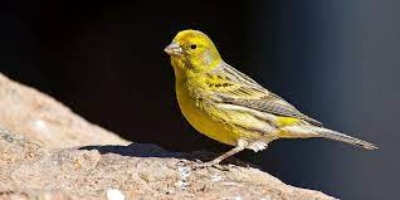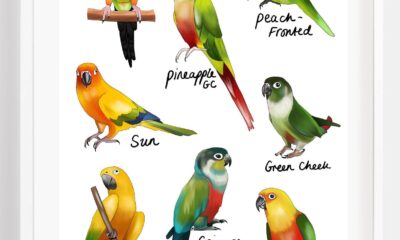Birds
CAGED BIRDS AS PETS: A CRUELTY NEVER PURCHASE A BIRD AND HERE’S WHY
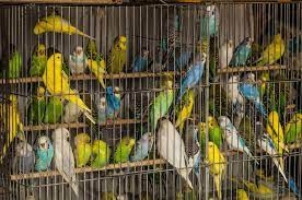
All caged birds sold in pet stores, online, or on the Internet are, first and foremost, either captive-bred or wild-caught birds. Birds that are seized in the wild are probably illegally caught, forcibly taken from their natural habitats, and transported. If birds are not native to the wild, they are captive-bred, and both are doomed to live their entire lives in cages. Remember, birds are made to soar.
Whether it’s from the stress of being confined, the stress of a small cage, unusual noises and temperatures, a lack of freedom to fly and express bird behaviours, loneliness, an inappropriate environment, inadequate nutrition, or poor hygiene and sanitation, life in captivity is a total death sentence for birds. Birds are designed to fly, to be liberated, to exhibit typical behaviours whenever they choose, and to live in the wild with other members of their species and families. Birds who are confined experience anxiety, frustration, upsetness, boredom, loneliness, and severe mood swings. They become so upset that they “lose it.” They may exhibit odd behaviour patterns when in captivity, such as swinging back and forth and changing their foot placement repeatedly. Along with other aggressive actions, plucking one’s own feathers out till one is left without any is a common symptom of extreme frustration in captivity.
Stealing and kidnapping Cockatoos, macaws, parrots, and amazons are examples of wild birds whose beauty, intelligence, and impressive linguistic abilities, regrettably, have put their well-being and future in danger and turned them into a target for the domestic and illicit bird trade. Because they were not intended to be domesticated, these wild birds suffer greatly in captivity on a physical, emotional, and mental level. Their strong need to attach, the complexity of their emotional life, and the possibility of living to be 80 or 90 years old further complicate the situation. Many pet owners eventually come to the conclusion that they have taken on a challenge that is far more difficult than they can handle, and they seek assistance from shelters and sanctuaries that are already overrun with animals.
These captive birds go through a lot of stress because they were smuggled in from the wild to be domesticated. You can image the hardship we place on these animals by keeping them in cages, amputating their wings, and preventing them from being with other members of their own species. Cages and clipped wings ensure a sedentary existence. Heart disease is now incredibly prevalent. Not to mention worry, suffering, annoyance, and sadness.
The importing of wild birds was outlawed in the United States in 1992, although there is still a black market and illicit trading in wild birds. Removing birds and other animals from their natural habitat causes them a great deal of stress since they are cut off from their families, the bird community, and everything else that is native to them. This puts individual animals in danger as well as entire bird populations and ecosystems. The illegal importation of these birds into the United States or Europe frequently causes the populations of some species to collapse. Before being delivered, birds who are seized or kidnapped in the wild are frequently force-fed, have their wings clipped, have their beaks taped shut, and are jammed into every type of portable material imaginable. Birds frequently pass away through heart failure, dehydration, fear, shock, and other causes. Sometimes entire flocks of birds perish.
Birds
Enigmatic Tittie Bird
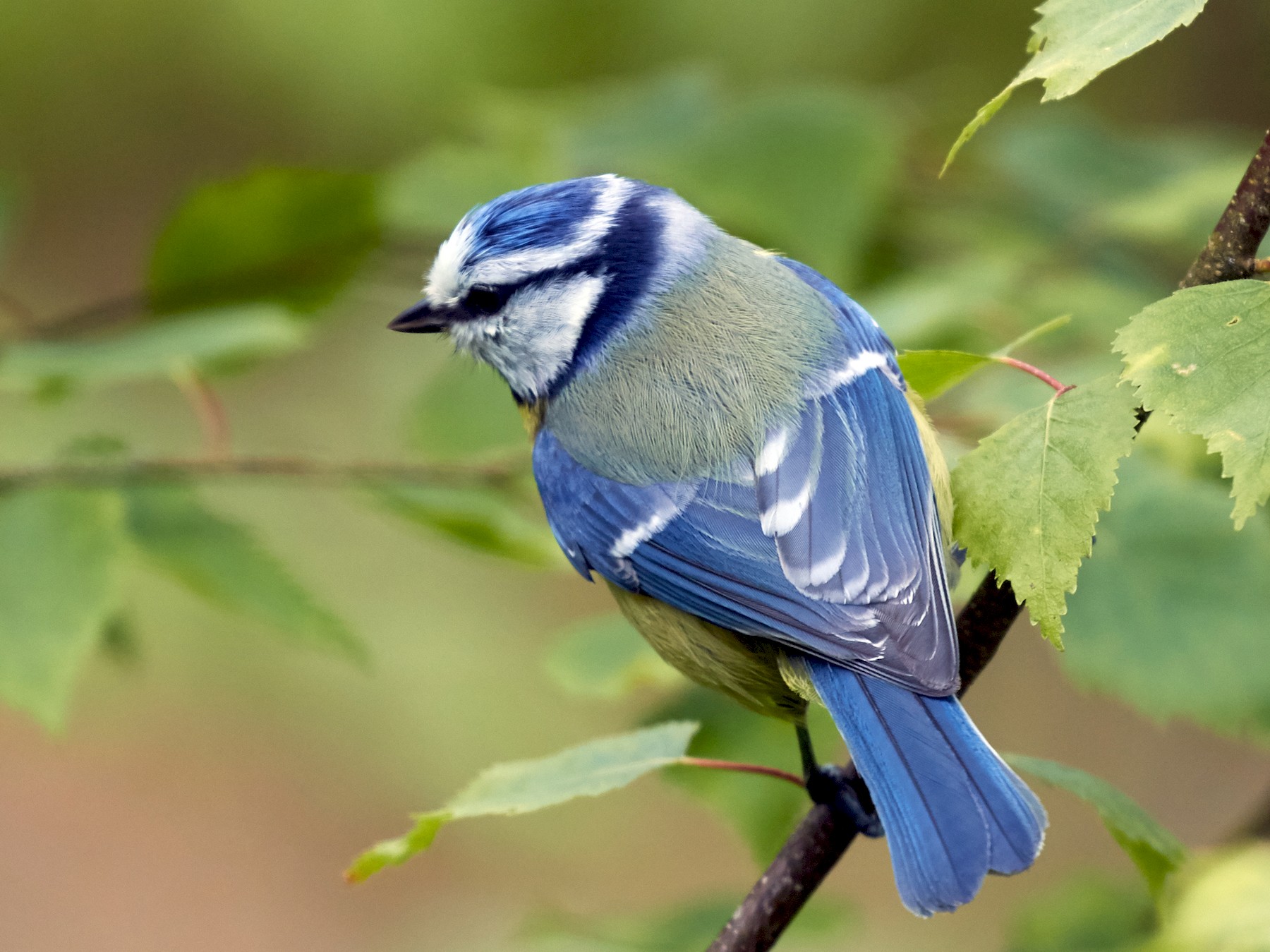
In the realm of avian diversity, nature often surprises us with fascinating creatures that captivate our attention. One such peculiar bird is the Tittie Bird, renowned for its distinctive name and unique characteristics. Despite its unusual name, this avian species holds an intriguing place in the world of ornithology. Intriguing scientists and bird enthusiasts alike.
The Origin of the Name:
The Tittie Bird, scientifically known as Acanthiza pusilla, owes its name to the sound of its call, which resembles a soft tittie. This diminutive passerine bird, commonly found in Australia, possesses an endearing charm that transcends its nomenclature.
Physical Characteristics:
Measuring around 8-10 centimeters in length, the Tittie Bird is a small, compact bird with a distinctive olive-brown plumage. Its diminutive size and unassuming appearance make it adept at camouflaging within its natural habitat, typically dense shrubbery or woodland areas.
The bird’s soft, melodious call, often heard during the mating season, is one of its notable features. This rhythmic and soothing vocalization adds to the allure of the Tittie Bird. Earning it a place among Australia’s beloved songbirds.
Habitat and Behavior:
The Tittie Bird thrives in a variety of habitats, including forests, woodlands, and gardens, preferring areas with dense foliage for nesting and foraging. Their diet primarily consists of insects, small invertebrates, and seeds, which they skillfully glean from foliage and bark.
These birds are known for their agile and active behavior, flitting swiftly between branches and bushes in search of food. Their social nature often sees them foraging in small flocks, displaying a cohesive and harmonious communal behavior.
Conservation Status:
Despite their adaptability and widespread distribution across Australia. Certain factors pose challenges to the Tittie Bird population. Habitat loss due to urbanization, deforestation, and climate change remains a significant threat. Conservation efforts are crucial to ensure the preservation of their natural habitat and safeguard these charming avian species for generations to come.
Cultural Significance:
Beyond their ecological importance, Tittie Birds hold cultural significance among indigenous Australian communities. Their presence in folklore and traditional stories reflects their place in the cultural tapestry of the region, symbolizing resilience and adaptability.
Conclusion
The Tittie Bird, with its unassuming name and captivating presence, stands as a testament to the diverse and enchanting world of avian life. Despite its small stature, this bird embodies resilience, adaptability, and a unique charm that continues to fascinate bird enthusiasts and scientists alike. Preserving their habitats and appreciating their role in nature’s intricate. Web remains essential to ensuring the survival of this delightful species.
As we delve deeper into the mysteries of the natural world, the Tittie Bird serves as a gentle reminder of the beauty and wonder that abound in the realm of birds, enriching our lives with their presence.
Birds
Partridge Ground-dwelling Enigma of Fields and Folklore
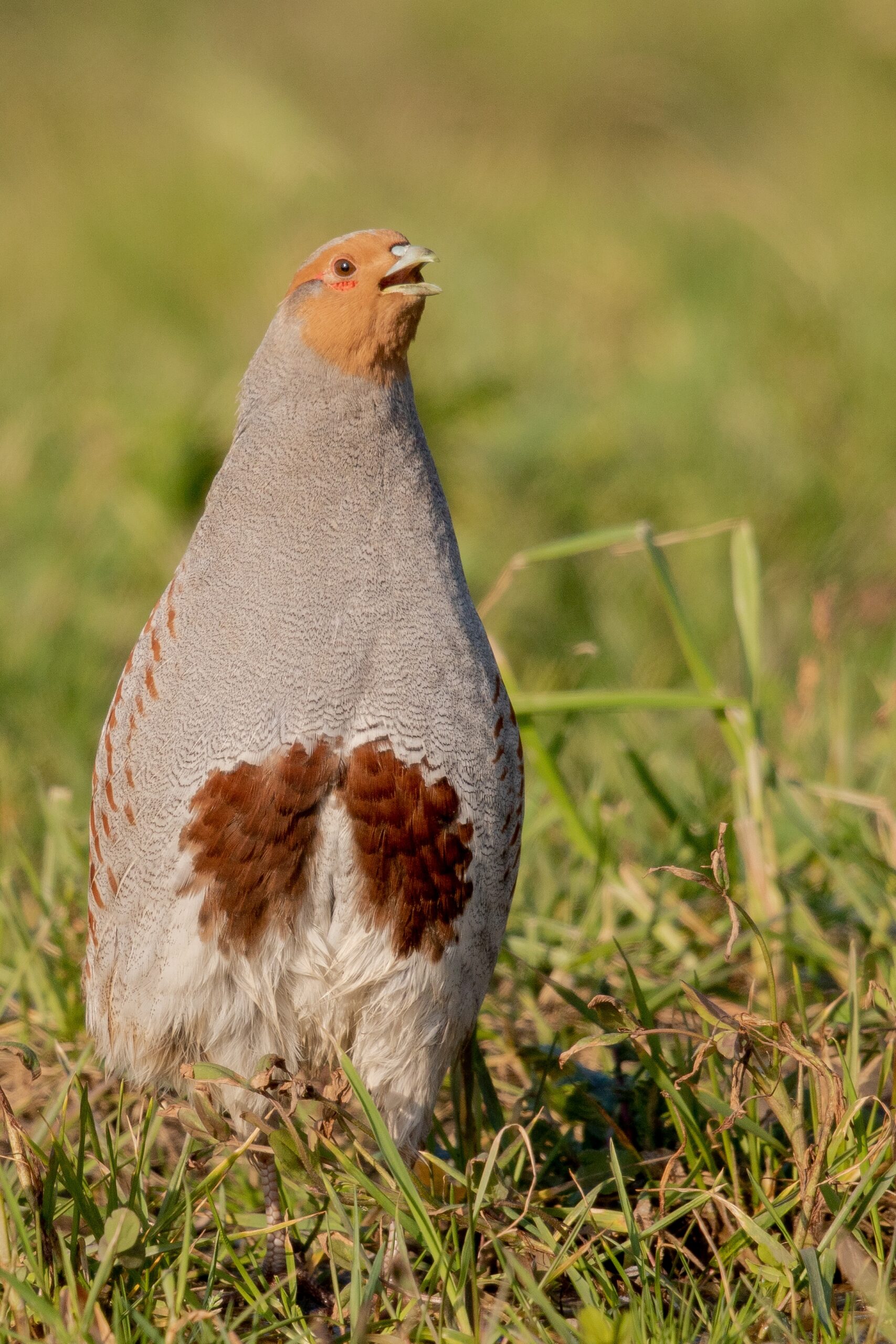
The partridge, a small and plump bird belonging to the pheasant family, holds a unique place in the avian world. With its distinctive appearance and behavior, the partridge has fascinated bird enthusiasts and hunters alike for centuries. From its habitat and characteristics to its significance in various cultures, the partridge captivates attention and admiration.
Appearance and Characteristics
The partridge is recognized for its rounded body, short wings, and sturdy legs. Its plumage varies across species, often displaying a mix of brown, gray, and white feathers that provide effective camouflage in its natural environment. Typically, males boast more vivid colors and markings compared to females, allowing them to stand out during courtship displays.
These birds have adapted to a ground-dwelling lifestyle, preferring to run rather than fly when threatened. Their diet primarily consists of seeds, berries, and insects found in their habitat, making them an integral part of the ecosystem.
Habitat and Distribution
Partridges are commonly found in grasslands, farmlands, and open woodlands across Europe, Asia, Africa, and the Middle East. They prefer areas with a mix of open fields for foraging and shrubby cover for nesting and protection. Different species of partridges have adapted to various climates and terrains, showcasing their remarkable adaptability.
Behavior and Social Structure
These birds exhibit social behaviors and are often seen in small groups known as coveys. Within these coveys, partridges establish hierarchies through subtle displays of dominance. During breeding season, males perform elaborate courtship rituals to attract females, involving calls and displays of plumage.
Partridges are known for their distinctive whirring flight pattern, which they use when startled or flushed out of cover. While they can fly for short distances, they prefer to rely on their running abilities to escape predators.
Cultural Significance
The partridge holds cultural significance in various societies. It appears in folklore, literature, and religious texts, often symbolizing traits such as fertility, sacrifice, or perseverance. In some regions, it has become a symbol of good fortune or a traditional dish in culinary practices, especially during festive seasons.
Conservation Status and Threats
Several species of partridges face threats due to habitat loss, hunting pressures, and changes in agricultural practices. Conservation efforts, including habitat preservation and sustainable hunting practices, are crucial in maintaining healthy populations of these birds.
Final Thoughts
The partridge, with its distinctive characteristics and cultural significance, remains a captivating bird that enriches ecosystems and cultural heritage. Understanding and conserving these remarkable creatures not only contribute to biodiversity but also preserve the rich tapestry of human traditions intertwined with these avian marvels.
Birds
Shrike Nature’s Silent Hunter and Enigmatic Impale
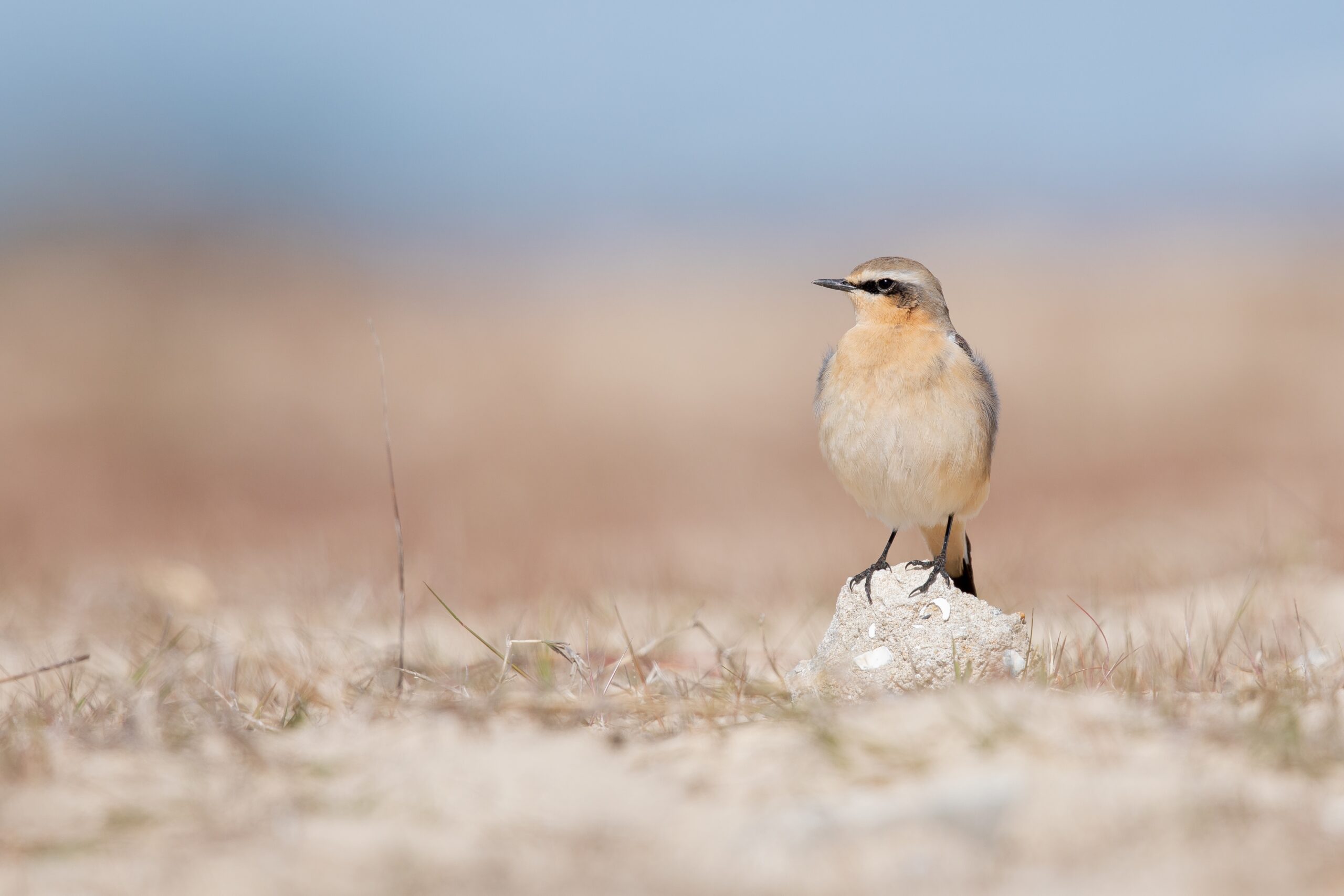
The shrike, a diminutive yet ferocious bird, belongs to the Laniidae family and is known for its predatory nature despite its small size. This avian species, often referred to as the butcher bird, captivates ornithologists and nature enthusiasts alike with its unique characteristics and behaviors. From its physical attributes to its hunting techniques, the shrike stands out among its avian counterparts as a remarkable and intriguing creature.
Physical Characteristics
Shrikes are small to medium-sized birds, typically measuring around 7 to 10 inches in length, depending on the species. They possess a distinctive hooked bill that resembles that of a raptor, which they use to catch and kill their prey. This beak, combined with their relatively large heads and strong legs, contributes to their predatory prowess.
Their plumage varies across different species, but they commonly display gray, black, and white feathers. Some species exhibit striking patterns, such as the Loggerhead Shrike’s black mask across its eyes, adding to their visual appeal.
Habitat and Distribution
Shrikes are widely distributed across various regions worldwide, including North America, Europe, Asia, and Africa. They are adaptable birds, occupying diverse habitats such as open woodlands, grasslands, scrublands, and agricultural areas. Some species prefer specific environments, such as the Northern Shrike that thrives in the northern boreal forests, while others, like the Southern Fiscal Shrike, favor more open habitats.
Feeding Behavior and Predatory Skills
One of the most fascinating aspects of shrikes is their hunting behavior. Despite their small stature, these birds exhibit predatory tactics comparable to raptors. They primarily feed on insects but also target small vertebrates like lizards, mice, and even other birds.
The shrike’s unique hunting strategy involves impaling its prey on thorns, barbed wire, or other sharp objects. This behavior, termed larder hoarding, serves multiple purposes. It allows the shrike to tear apart larger prey into more manageable pieces, serves as a food storage method for future consumption, and can also function as a display to attract potential mates.
Breeding and Reproduction
During the breeding season, male shrikes establish territories and perform elaborate courtship displays to attract females. These displays often involve singing, flight demonstrations, and offerings of food. Once a pair forms, they build a nest together, typically using twigs, grass, and other plant materials.
The female lays a clutch of eggs, usually ranging from 3 to 6 eggs depending on the species. Both parents take turns incubating the eggs and feeding the chicks once they hatch. The young shrikes develop rapidly and leave the nest within a few weeks, although they remain dependent on their parents for food and protection for a while longer.
Conservation Status and Threats
While some species of shrikes are abundant and widespread, others face threats to their populations. Habitat loss due to urbanization, agricultural expansion, and deforestation poses a significant challenge for many shrike species. Pesticide use in agricultural areas can also indirectly impact shrikes by reducing their insect prey.
Conservation efforts aimed at preserving their habitats and raising awareness about these unique birds’ importance in ecosystems are crucial for their long-term survival.
Conclusion
The shrike, with its small stature but remarkable predatory skills, stands out as a captivating bird in the avian kingdom. Its unique hunting techniques, diverse habitats, and intriguing behaviors continue to fascinate scientists and nature enthusiasts worldwide. As we strive to protect our planet’s biodiversity, understanding and appreciating the significance of creatures like the shrike becomes imperative for their conservation and the preservation of our natural world.
-

 Dog2 years ago
Dog2 years agoPomeranian Dog Best Bread Information
-

 Dog2 years ago
Dog2 years agoLarge Münsterländer And Its Breed In 2022
-

 Dog2 years ago
Dog2 years agoBlue Heeler Australian Cattle Dog Breed info & Care
-

 PET2 years ago
PET2 years agoHow to choose the best pet boarding house?
-
Hedgehog2 years ago
Hedgehog Top 20 Surprising Curiosities
-
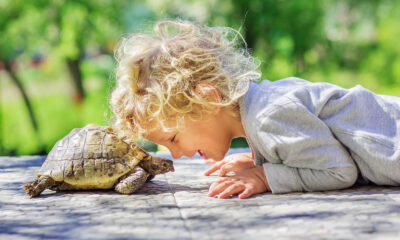
 Turtle2 years ago
Turtle2 years ago4 types of domestic turtles to have at home?
-
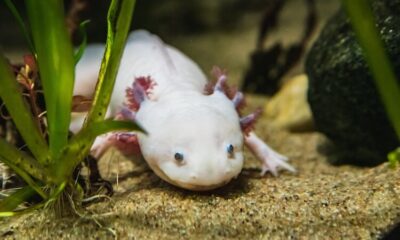
 Axolotl2 years ago
Axolotl2 years agoAxolotl: Top 10 Care Sheet, life & a lot
-

 Exotic7 months ago
Exotic7 months agoPetSmart Killeen: The Ultimate Guide for Pet Lovers

